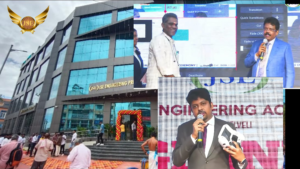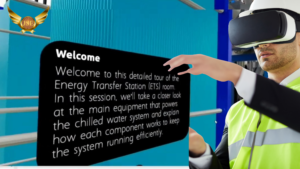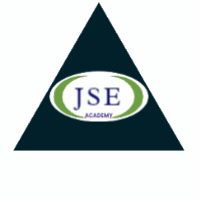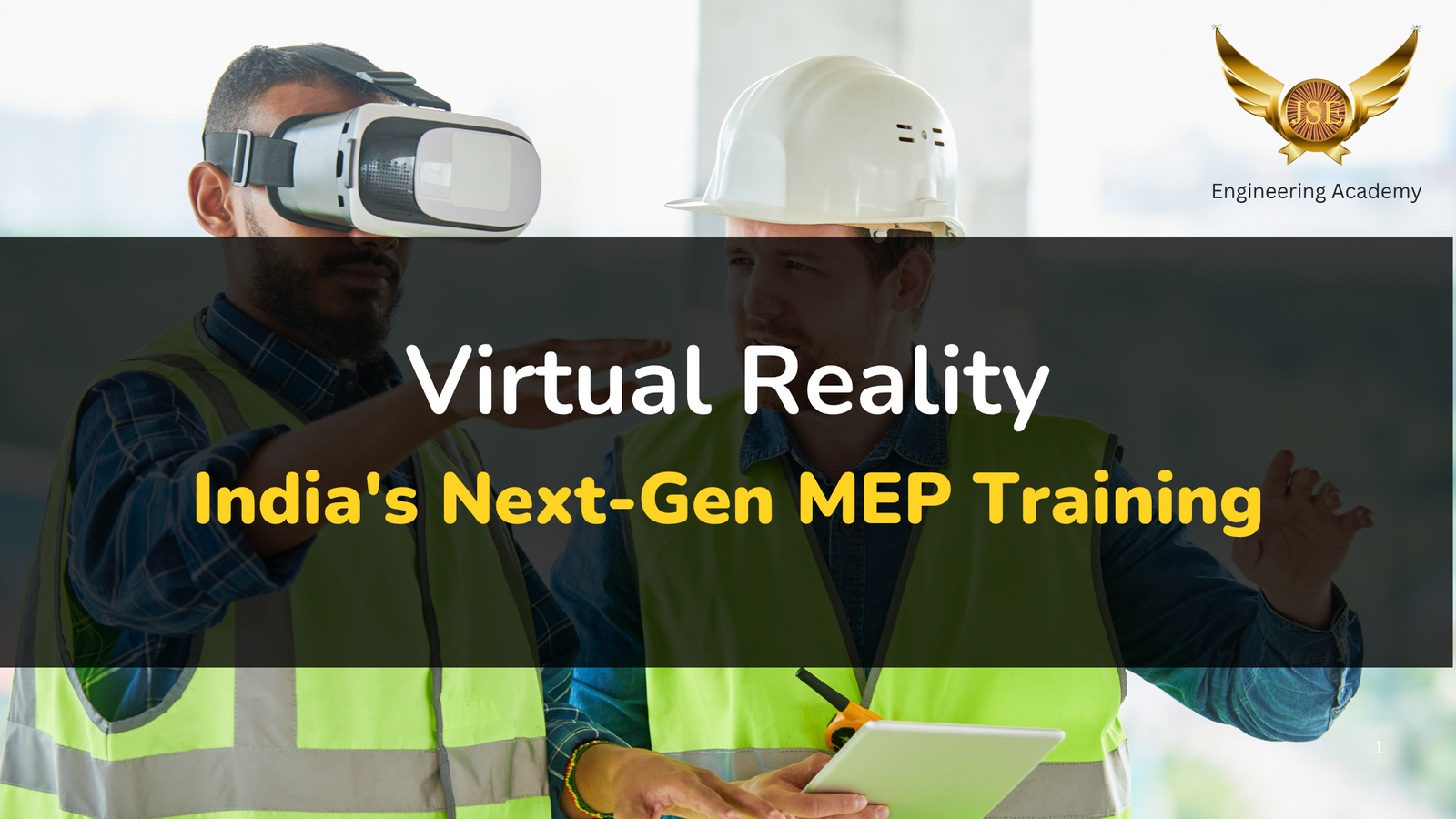JSE Academy Goes Virtual: Revolutionizing MEP Education with VR Technology
At JSE Academy, we believe engineering education shouldn’t just be watched — it should be lived. That’s why we’ve introduced cutting-edge Virtual Reality (VR) support into our MEP (Mechanical, Electrical, Plumbing) training classrooms. With VR, students no longer remain in 2D drawings or theoretical lectures; they can step inside their designs, explore, troubleshoot, and truly feel how systems work.
That’s right. From this year (2025) onward, students at JSE won’t just learn about MEP systems from books or software: “they’ll step inside them. Literally.”
On 16th July, 2025, JSE Engineering Private Limited and JSE Engineering Academy officially opened another new branch at Nellai City Buildings, Tirunelveli, where our Managing Director and special guests for the day launched India’s first VR-powered MEP and BIM training for all engineering diploma and graduates across branches. Thai opportunity gives a new path of understanding core engineering more, but also helps students see what they are going to create in the world of architecture. Let’s continue reading to know about this VR-integrated engineering learning with JSE.

Why VR in MEP Training? Because Engineers Need to See It to Build It!
Mechanical, Electrical, and Plumbing (MEP) design isn’t just about knowing the theory—it’s about visualizing systems, understanding real-world installations, and solving spatial coordination challenges. Traditional 2D and 3D drawings and lectures simply aren’t enough anymore.
With VR, our students can:
- Walk through a virtual mechanical room
- Inspect HVAC duct layouts in real-time
- Understand electrical panel placements and wiring routes
- Interact with public health and plumbing systems as if they were on-site
This immersive approach helps our learners build confidence, grasp complex design logic, and make fewer real-world mistakes, which is exactly what top engineering companies look for.
What is VR-enhanced MEP Training?
- Immersive Learning Environment: Instead of imagining how HVAC ducts or electrical conduits will look in a hall or plant room, students using VR see them in virtual 3D. They can walk around, view from different angles, test placements, check for clashes, etc.
- Hands-On with Zero Risk: Imagine testing a piping layout for a large commercial block — but you do it virtually first. If there are issues, you adjust without wasting materials or risking incorrect installations.
- Visualization of Complex Systems: MEP systems are interwoven — electrical, plumbing, ducts overlap. VR allows overlaying these layers and understanding spatial relationships in ways that 2D and even standard 3D models on screens don’t fully show.
Courses Enhanced with VR at JSE Academy:
At JSE Engineering Academy, the following job-oriented courses are now VR-integrated:
1. BIM Advanced Course
- Clash detection and coordination with VR models
- Virtual building walkthroughs
- Better interdisciplinary visualization
- Students overlay different systems (electrical, plumbing, ducts) in VR, find clashes, and adjust designs.
2. Revit MEP
- Live design interaction in 3D space
- Enhanced understanding of duct, pipe, and cable tray routing
- Practical system installation views
3. HVAC System Design
- Learn placement of diffusers, ducts, and AHUs
- VR modeling of ducts, fans, VR simulation of airflow, and equipment placement in a full building model.
4. Electrical System Design
- Identify circuit layouts virtually
- Understand panel boards, cable runs, and lighting layouts spatially
5. Public Health & Firefighting System Design
- Visualize slope drains, water tanks, pipe networks, and waste lines
- Simulate water flow and detect design errors
- VR simulations of fire spread, sprinkler response, and evacuation paths
6. AutoCAD MEP
- Drafting now backed with 3D review of the designed elements
- Convert 2D into experience-based 3D clarity
Read Blog: Top AutoCAD MEP training at Trichy
How VR Helps Students: Benefits
- Enhanced Understanding & Retention
Studies show VR improves visualization, engagement, and retention, especially with 3D structures and spatial complexity. - Active Learning & Motivation
VR isn’t passive. Students participate in simulation, interaction, and testing. This increased engagement helps motivation and deeper learning. - Reduced Costs & Safer Training
Physical prototyping, setting up large models or mockups, is expensive. Virtual tests cost less, avoid material waste, and reduce safety risks. - Better Career Prospects
Employers value candidates who can work in BIM environments, use modern simulation tools, and foresee issues before they arise. VR-trained students stand out in job interviews.
Plus, experience with spatial coordination, clash detection, and virtual simulations a high-demand skill in India and abroad (especially MEP consultancies, building services firms, HVAC design companies). - Collaborative & Cross-disciplinary Skills
In VR, different branches (Mechanical, Electrical, Civil) work together in a shared model. This builds communication skills, teamwork, very important in real projects.
Challenges & How JSE Addresses Them
- Hardware & Setup Costs
VR headsets, powerful machines, and software licenses cost money. At JSE, we’ve chosen cost-effective yet quality VR devices, bulk licenses, and carefully scheduled lab sessions. - Learning Curve
Students new to VR may find interactions clunky initially. We provide orientation & guided workshops so they gain comfort with navigation, controls. - Model Complexity vs Performance
Very large models in VR can lag. We teach students how to optimize models, use level-of-detail (LOD), chunking, and avoid overly dense meshes.

The Future Engineer Learns Differently
We don’t just train you to get a job—we prepare you to lead in your field. Our goal is to make sure every student who walks into JSE Academy walks out as a confident, technically strong, and industry-ready engineer.
With VR, we are:
- Making learning interactive and fun
- Offering realistic design simulations
- Bridging the gap between the classroom and the construction site
From 2D to VR: Engineering Education Just Leveled Up
It’s time to move beyond just clicking and typing. Step into the future with JSE’s VR-powered MEP design courses. Get job-ready. Be future-proof. And most importantly, experience engineering like never before.
VR isn’t just a gimmick or tech-sparkle; it’s a transformative tool that bridges theory and practice. JSE Academy’s decision to include VR in MEP training gives students a deeper understanding, more confidence, and a sharper skillset that’s in demand.
ALSO READ: Build your Engineering Career from Nellai JSE Academy
If you’re a Mechanical, Electrical, Civil, or ECE student or graduate, this means you don’t just learn… You design, test, revise, collaborate, and it’s time to step into your career ready for the real world (or abroad) with JSE Engineering Academy. We have branches across India [Chennai, Trichy, Nellai, Vizag]. Enroll with us now!






